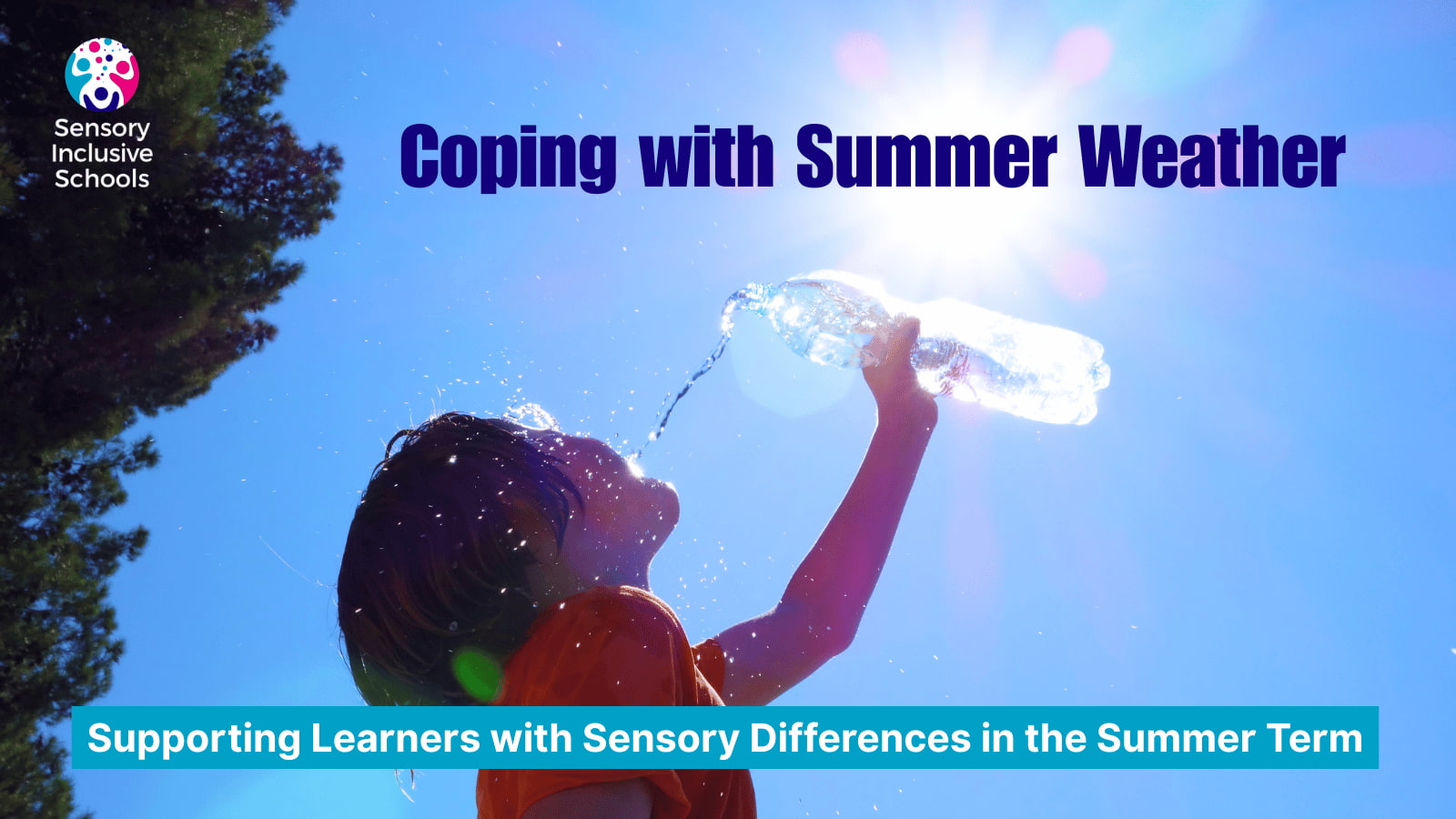
As temperatures rise and sunshine becomes a more regular fixture of the school day, it's important to consider how summer weather can affect learners, especially those with sensory processing differences. The combination of heat, strong light, noisy outdoor play, and changes to routines can be overwhelming for some pupils.
Here are practical tips to help you support all learners to stay comfortable, safe, and included during the summer term.
1. Rethink Uniform Rules with Compassion
Many schools allow summer uniform options during the hotter months, but it's worth going a step further. For some pupils, sensory needs may mean that even summer uniform feels uncomfortable — for example, stiff collars, synthetic fabrics, or exposed skin might cause distress. Where possible, opt for compassion over policy: allowing reasonable, sensory-informed adaptations (like soft cotton T-shirts, wide-brimmed hats, or wearing PE kits on hot days) can make a big difference.
2. Sun Protection That Suits Sensory Needs
Applying sunscreen is essential, but not always easy. Students who are tactile defensive may find creams or lotions unbearable due to the greasy texture. Some children may cope better if they apply sunscreen themselves, or if they’re distracted during the process (e.g., by chatting about a favourite topic). For younger children, ask parents what application method works best and whether they've already applied it at home.
3. Hydration and Heat Awareness
Some children, particularly those with interoception differences, may not recognise when they are too hot or thirsty. Encourage regular water breaks and check in with pupils individually if they seem out of sorts. They may need prompting to remove their school jumper or cardigan if they look hot. Visual reminders, timers, or classroom routines can prompt hydration without drawing unwanted attention to specific children.
4. Plan Outdoor Time with Sensory Regulation in Mind
Where possible, schedule outdoor lessons, playtimes or sports activities in the cooler parts of the day, probably the early morning. Ensure shaded areas are available and accessible, whether that’s natural shade from trees or temporary structures like pop-up canopies. Some learners may need a quieter or shaded zone to regulate if the sensory input from sun, noise, and movement becomes overwhelming.
5. Include Everyone in Summer Sports
Summer often brings an increase in sports days and outdoor PE, which can be challenging for pupils with motor planning (praxis) or vestibular difficulties. These pupils might struggle with coordination, balance, or knowing how to start a new movement. Providing clear, step-by-step demonstrations, visuals, or pre-teaching can help. For some pupils, it might help to practice with a smaller group or in a quieter space before joining the main activity. Don’t assume reluctance to join in is a lack of interest — it may be a sign of anxiety or sensory overload.
6. Transitions and Changes
The end of the school year often brings special events, class moves, and timetable disruptions — all of which can feel more intense in hot weather. Where possible, prepare pupils in advance with visual timetables, countdowns, and social stories. Build in sensory regulation breaks and consider creating calm, cool-down spaces indoors for those who need a moment away from the sensory busyness.

